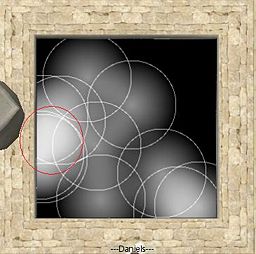The Wiki for Tale 4 is in read-only mode and is available for archival and reference purposes only. Please visit the current Tale 11 Wiki in the meantime.
If you have any issues with this Wiki, please post in #wiki-editing on Discord or contact Brad in-game.
Difference between revisions of "User:Daniels\AlloyGuide"
| Line 9: | Line 9: | ||
4. For best practices, click on a circle that overlaps the most dense group of circles. This circle should also be the closest to the most dense group of circles (but not too close! see [[Alloyyesandno|Alloys Yes and No]], point 2 and 7). | 4. For best practices, click on a circle that overlaps the most dense group of circles. This circle should also be the closest to the most dense group of circles (but not too close! see [[Alloyyesandno|Alloys Yes and No]], point 2 and 7). | ||
| − | 5. Two of the most important | + | 5. Two of the most important theories of alloys tend to get overlooked: |
:* The further away a dense mass of crystals have to travel, the more spread apart they will become. | :* The further away a dense mass of crystals have to travel, the more spread apart they will become. | ||
| − | :* A very tightly non-crystalized group of crystals will move together over one single outer crystal (this is how 100%'s are born). | + | :* A very tightly non-crystalized group of crystals is the exception to this. they will move together over one single outer crystal (this is how 100%'s are born). |
6. Accept the fact that not all alloy layouts are possible to work with. Even the best alloy makes get a lot of failures or yields that are not worth taking. | 6. Accept the fact that not all alloy layouts are possible to work with. Even the best alloy makes get a lot of failures or yields that are not worth taking. | ||
| − | Now, let's put these themes and theories to practice. | + | Now, let's put these themes and theories to practice. We begin with an okish layout of circles: |
| − | |||
| − | We begin with an okish layout of circles: | ||
[[Image:daniels_guide_1.jpg|256px]] | [[Image:daniels_guide_1.jpg|256px]] | ||
We've identified the most dense group of circles, and placed a red circle around this most dense area. This should be the focal point for any given layout of circles. Using this focal point, we find the closest circle to this area | We've identified the most dense group of circles, and placed a red circle around this most dense area. This should be the focal point for any given layout of circles. Using this focal point, we find the closest circle to this area | ||
Revision as of 22:35, 24 February 2009
This guide is meant to be a supplement to the other guides on Alloy. The reason I wrote this guide was to share my methods with players who are new to making alloys. While the other guides are great for explaining theories, and showing them in practice, this guide will attempt to give you a method with which you can begin learning how to do alloy well. Now, for the themes that I will be teaching in this guide:
1. Don't be greedy. Know when to give up on an outer circle.
2. Overlapping circles can be clicked, but it isn't a good idea. Click on a non-overlapping section of a crystal.
3. Followup to the above theme number 2: if the any other crystal overlaps too much, then the batch will crystalize (see Alloys Yes and No, point 2 and 7).
4. For best practices, click on a circle that overlaps the most dense group of circles. This circle should also be the closest to the most dense group of circles (but not too close! see Alloys Yes and No, point 2 and 7).
5. Two of the most important theories of alloys tend to get overlooked:
- The further away a dense mass of crystals have to travel, the more spread apart they will become.
- A very tightly non-crystalized group of crystals is the exception to this. they will move together over one single outer crystal (this is how 100%'s are born).
6. Accept the fact that not all alloy layouts are possible to work with. Even the best alloy makes get a lot of failures or yields that are not worth taking.
Now, let's put these themes and theories to practice. We begin with an okish layout of circles:
We've identified the most dense group of circles, and placed a red circle around this most dense area. This should be the focal point for any given layout of circles. Using this focal point, we find the closest circle to this area
